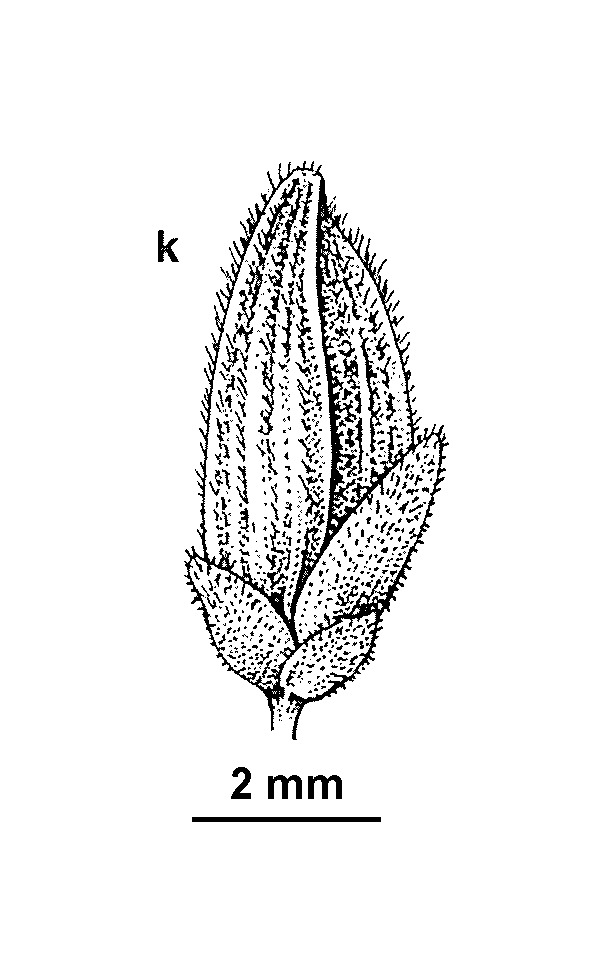Tetrarrhena distichophylla
(Labill.) R.Br. Hairy Rice-grassRhizomatous perennial, often mat-forming, culms ascending to 50 cm high. Leaves spreading to erect, distichous, usually hairy; hairs often in two series-a dense, short, velvety layer overlain by sparser bristles to 1 mm long; blade flat or inrolled, 1–12 cm long, 2–6 mm broad; ligule ciliate to 0.5 mm long with marginal hair-tufts to 2 mm long. Inflorescence an erect, spike-like raceme 2–4 cm long. Spikelets subsessile, 4–12 per raceme, 4.0–6.0 mm long, pale green; glumes subequal, 0.5–1.8 mm long, variably covered with short, stiff hairs; lemmas generally hairy or scabrous along the 5–7 slightly raised nerves, sterile lemma from one-third to one-half length of spikelet, obtuse, dorsally rounded, upper sterile lemma obtuse to acute, sometimes shortly mucronate; fertile lemma subequal to upper sterile lemma but more strongly keeled; palea slightly shorter than fertile lemma; stamens 4. Flowers Nov.–Mar.
LoM, Wim, GleP, VVP, GipP, OtP, WaP, Gold, CVU, GGr, DunT, EGL, EGU, WPro, HSF, HNF, OtR, Strz. Also SA, Tas. Usually occurring in dryish open-forests on sandy or rocky soils, mostly west of Western Port, with isolated easterly occurrences on and near Wilsons Promontory, foothills of the Strzelecki Ranges and near Rosedale. Unvouchered records from East Gippsland are doubtful.
Walsh, N.G. (1994). Poaceae. In: Walsh, N.G.; Entwisle, T.J., Flora of Victoria Vol. 2, Ferns and Allied Plants, Conifers and Monocotyledons, pp. 356–627. Inkata Press, Melbourne.
 Spinning
Spinning

